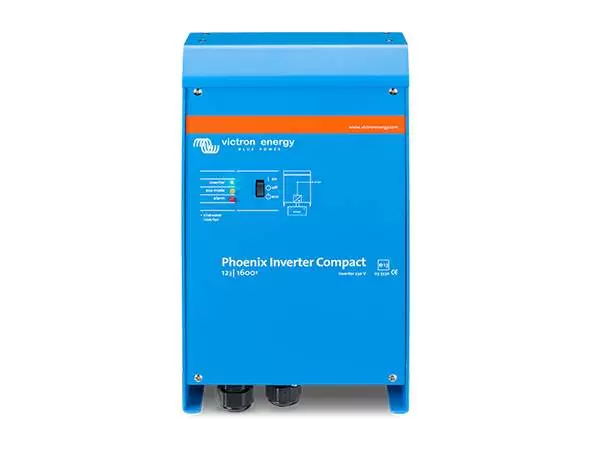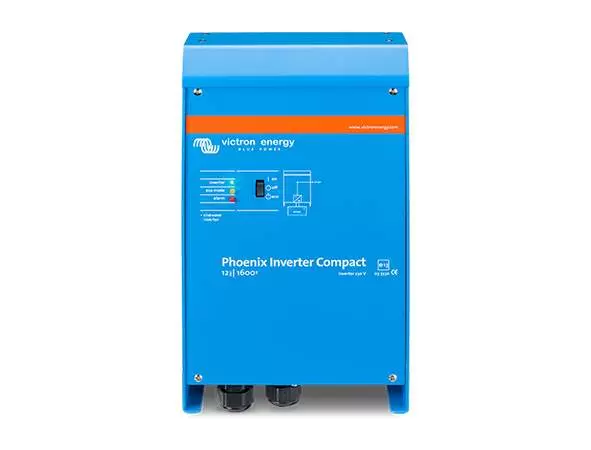When choosing the suitable inverter for your home or business, knowing which type of inverter is best for your needs can be challenging. One of the significant differences between a 4000 and 5000-watt inverter is the amount of power they can provide. In this blog post, we will discuss why you should choose a 4000 or 5000 watt inverter and the benefits they can offer. By understanding the differences between the two types of inverters, you can make an informed decision when selecting the right one.
The Purpose Of An Inverter
An inverter is a device used to convert DC power (direct current) into AC power (alternating current). Inverters power household appliances, recreational vehicles, and other electronics. They can also be used to provide a power backup during outages.
Inverters come in various sizes and wattage capacities. An inverter’s wattage capacity determines how much power it can deliver. A larger wattage inverter can supply more power, while a smaller one is better for smaller loads. The most common inverters are in the range of 1,000 to 6,000 watts.
An inverter is a critical component of any off-grid or alternative energy system. It takes energy from a solar panel, wind turbine, or battery and converts it into usable AC power for running appliances and electronics. Inverters are also used to convert DC power from batteries into AC power for devices such as TVs, computers, and small appliances.
 What Is The Difference Between A 5000 And 4000 Watt Inverter
What Is The Difference Between A 5000 And 4000 Watt Inverter
When choosing an inverter, one of the most significant differences between a 5000-watt and a 4000 watt inverter is the amount of power it can provide. A 4000-watt inverter can provide up to 4 kilowatts of AC power at any given time, while a 5000-watt inverter can provide up to 5 kilowatts.
Another difference between the two is the amount of current they can handle. A 4000-watt inverter is designed to hold up to 40 amps of current, while a 5000-watt inverter can take up to 50 amps. It means that the 4000-watt inverter will be able to take fewer large appliances than the 5000-watt inverter.
In addition to power output and current handling capacity, another difference between the two inverters is their weight and size. A 4000-watt inverter is much smaller and lighter than a 5000-watt inverter, making it easier to transport and install.
Finally, the cost of each type of inverter will vary depending on the brand and model. Generally speaking, a 4000-watt inverter will cost less than a 5000-watt inverter. It makes sense as the 4000-watt inverter will have fewer components and require less energy.
In summary, the difference between a 4000 and 5000-watt inverter is primarily determined by the amount of power they can provide, the amount of current they can handle, their weight and size, and their cost. When choosing which type of inverter is best for you, consider your needs in terms of power output, current handling capacity, and price.
Which One Should You Choose?
When it comes to choosing between a 4000-watt inverter and a 5000-watt inverter, can be challenging to decide. Understanding the differences between the two is essential to make an informed decision. The most important thing to consider is your power needs.
If you are looking for a basic inverter, a 4000-watt inverter is usually sufficient. This type of inverter can run multiple smaller appliances at once, like lights and a laptop, and more oversized items, like a coffee maker or microwave.
On the other hand, if you are looking for more power or plan on running multiple large appliances simultaneously, a 5000-watt inverter might be the better choice. This type of inverter can provide enough ability to run several large appliances simultaneously, such as an air conditioner, refrigerator, or large television.
In addition to power needs, you should also consider cost and installation. Generally, a 5000-watt inverter is more expensive than a 4000-watt inverter and may require professional installation to get up and run.
Ultimately, deciding between a 4000 or 5000-watt inverter comes down to your specific power needs. If you plan on running multiple large appliances simultaneously, a 5000-watt inverter is likely the better choice. However, if you only plan on using a few small devices at once, then a 4000-watt inverter may be all you need.
How To Use An Inverter
Using an inverter is pretty straightforward. The inverter takes the AC from your power source and converts it to DC, which can be used for power devices.
First, you’ll need to connect the inverter to your power source. Depending on the type of inverter you have, this could involve plugging it into a wall outlet or directly into your vehicle’s battery. Ensure you have the correct power cords for your particular inverter and power source.
Next, you must connect whatever device you power to the inverter’s outlets. It can be done with a direct connection or by using a cord with the appropriate plug for your device. Ensure that your device’s voltage requirements match the output voltage of the inverter before connecting it.
Finally, turn the inverter on and check that the device is receiving power. You may also want to monitor your device’s wattage and ensure it is within the wattage limits of the inverter. If you use a portable inverter, it is essential to check its battery level periodically and recharge it as needed.
When using an inverter, it is essential to read and follow all safety instructions included with the unit and observe any warnings listed on the product label. Also, always use a surge protector when operating an inverter to protect your equipment from power spikes and surges.
What Are Some Things To Keep In Mind When Using An Inverter
When using an inverter, it’s important to remember that the higher the wattage rating of the inverter, the greater the power output it can provide. In addition, depending on the specific inverter you choose, you may need to be mindful of some other considerations, such as its peak wattage rating, surge capacity and total harmonic distortion rating.
It’s also important to be mindful of the types of appliances and electronics you are connecting to your inverter. Many inverters come with overload protection to help prevent damage if a device draws more power than the inverter can handle. It’s also important to consider how long you will run any given appliance or piece of electronics off your inverter, as many inverters are designed for short-term use.
Finally, it’s important to remember that many inverters are designed for indoor use only and should not be used outdoors. Be sure to read the instructions and specifications for your particular inverter carefully before attempting to use it, and follow all safety precautions when setting up and operating your inverter.
Conclusion
In conclusion, choosing between a 4000 and 5000-watt inverter is based on your power needs. A 4000-watt inverter suits most standard power needs, while a 5000-watt inverter is better for higher-demand applications. It’s important to consider all the factors when making your decision. Make sure to purchase an inverter compatible with your power needs, and also check the product’s safety features. An inverter can be a great way to use energy more efficiently, so make sure you clearly understand how to use it to maximize its benefits properly.
Related Websites:
Articles on Blogshunt
Articles on tbablogs
Articles on Blogspeoples
Articles on Thebigblogtheory
Articles on Allcityforums

